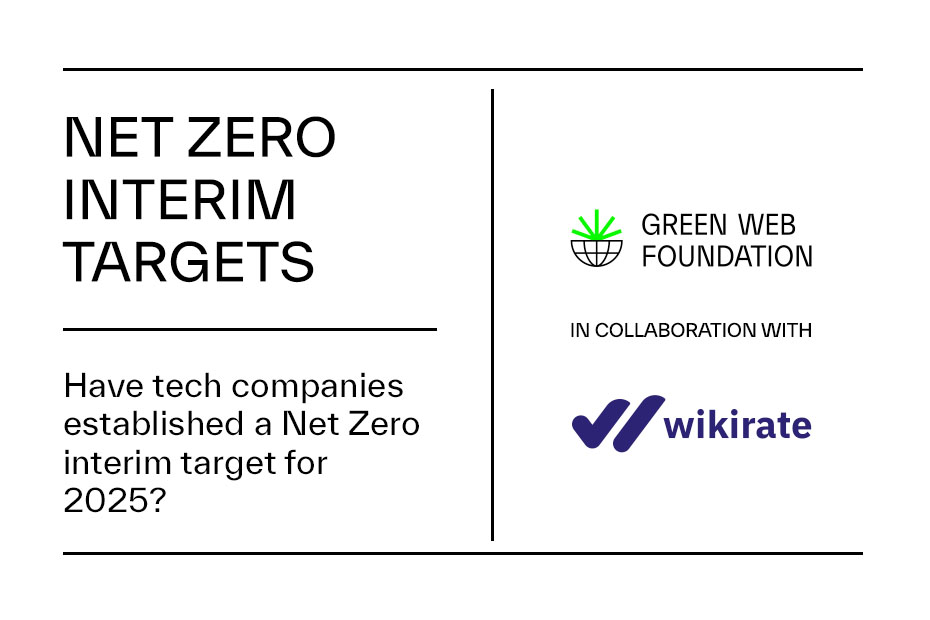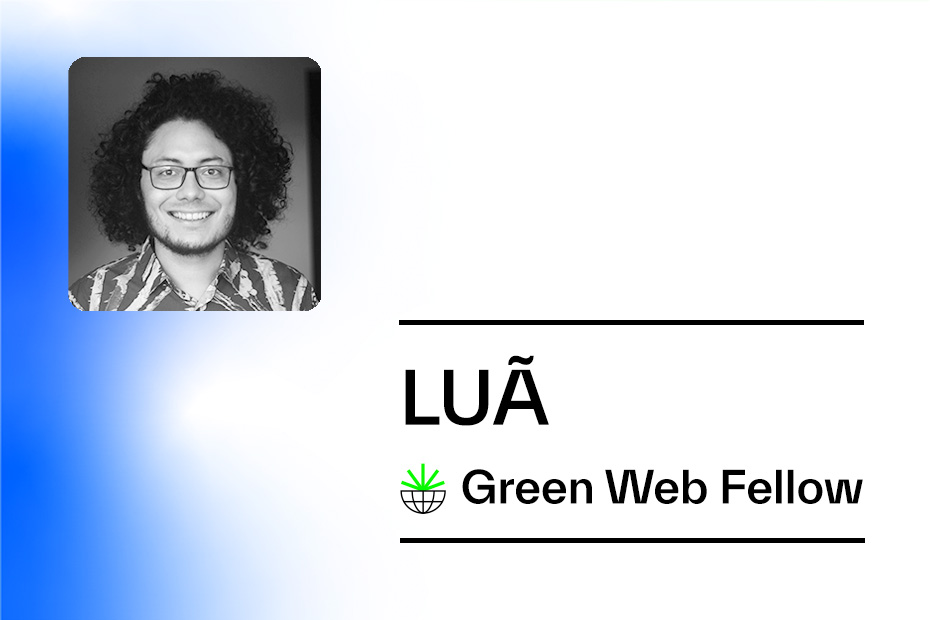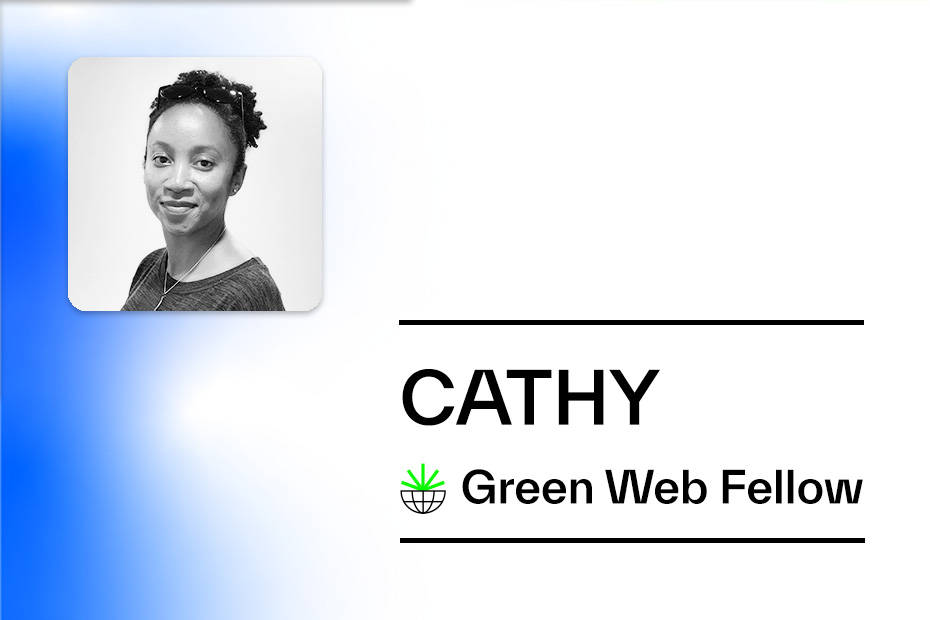We recently concluded a project with our friends at Wikirate to understand how much of the internet is covered by credible Net Zero targets. We worked together to crowdsource data for the firms behind the top 20 most queried domains online. In this post we summarise the key findings, what we learned about crowdsourcing sustainability data and how it has informed some of our future work in 2024 and 2025.
Quick jump links:
A recap of the project
Our organisation is oriented around the world reaching a fossil free internet by 2030. We care about a fossil free internet, because we see the continued burning of fossil fuels as a huge part of the problem when we talk about climate change. Since the early 2010s we’ve offered open tools and services to check if an organisation’s digital infrastructure is running on green energy.
But to reach a fossil free internet, we believe that organisations that make up significant parts of the internet need to be doing two more than this. Specifically two things beyond this:
- Making clear public commitments to reduce their carbon emissions as a signal to their own stakeholders.
- Following through with meaningful action.
This sounds nice, but what does this actually look like in practice?
We’ve gone into more detail in our first post introducing our use of the Wikirate platform for this project, and a second post detailing how we figured out which firms to research, and the specific questions were asking when we crowdsourced answers for our research. For convenience we’ll summarise the key points below.
What this project looked for and why
We were looking for information for the top 20 most queried domains online.
The key piece of information we were looking for was the existence of a clear, credible, public commitment, made in a way that results in meaningful near-term action. Rather than concoct our own definitions, we used the guidance from New Climate Institute to look for public targets with interim targets along the way.
This is important because without interim targets we can end up with nice sounding goals that allow organisations to put off any change. All the while growing amounts of carbon accumulate in the atmosphere, heating up the planet, and causing more harm. Back in 2008, the first ever climate change law in the UK was specifically written to make sure interim targets were set every five years – precisely avoid this kind of inaction. This is now considered good practice in the private sector as well.
A visual way to represent this is the diagram below:
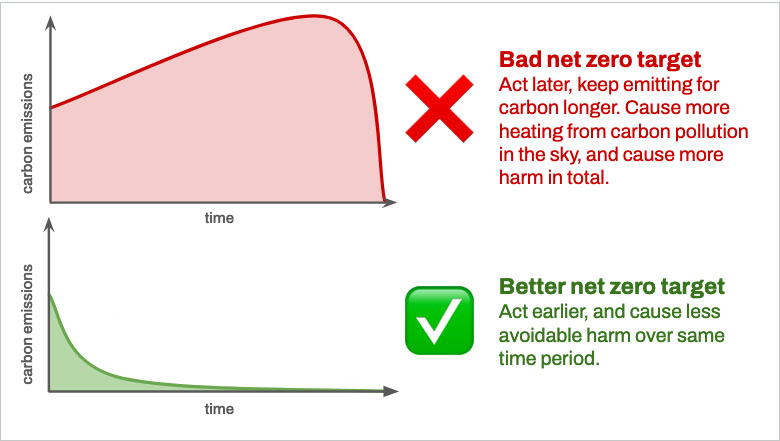
Two questions we tried to answer when researching firms
More concretely we used two, seemingly simple, questions to guide us when researching the firms that make up most of the internet.
The Wikirate platform allows you to formulate a research question to answer, provide extra guidance on how to answer it, and store a record of the answer for a given firm along with the specific source used to back it up. This is useful from a transparency point of view.
The idea is that it should only take one person to answer a question about a firm for it to be useful to others. These answers can be aggregated across multiple companies to give us a metric that tells us something interesting about a dataset made up of different firms.
What’s more, a source used for answering one question can also be useful for answering other questions. So using the Wikirate platform helps create a sort of commons of sustainability related information.
Depending on the kind of question you ask, you can come up with powerful queries. In our case we kept the guidance for answering this question to be a simple yes / no answer.
Our first question: Has this company set interim targets to achieve its Net Zero goals?
You can see this specific question with this extra guidance on the Wikirate site, along with every time someone has researched an answer for a specific firm. Our yes / no criteria were below:
- Yes. If the company discloses interim targets and reports on the progress against these targets, towards a state of net-zero carbon dioxide emissions.
- No. If the company does not provide information about its interim targets.
In these cases, we were looking for years and numbers being explicitly mentioned, or a percentage based on an existing published figure – not just a numbers-free chart showing a downward slope to zero.
Our second question: Has this company established a Net Zero interim target for 2025?
Again, you can see the guidance for answering this question on Wikirate with the answers for every firm that has an answer:
- Yes. If the company has disclosed any form of carbon reduction interim targets for 2025 or earlier on the way to reaching net zero in the future.
- No. If the company does not have an interim target for 2025 on the way to a stated net zero date in the future.
In both cases, we tried to avoid requiring reporting about all the ‘scopes’ of emissions used by a firm. As long as they set a target, we wouldn’t penalise a firm if they spoke about their direct emissions, but didn’t say anything about their supply chain.
Companies tend to publish sustainability data on different time schedules to financial data, and we were doing this research in 2023. We were hoping to find all the data for the year before, 2022. In case a firm hadn’t published new information yet, we chose to look for answers to these questions for both the reporting years of 2022 and 2021. We felt we’d be more likely to have a full set of data for our subset of companies.
Queried domains vs reporting companies
While we were looking for information for the top 20 domains, the number of firms we researched was lower. This is because some firms own more than one domain. Google and YouTube, were in the top 20 domains, but they’re both owned by the same company. If we were to go beyond the top 20 queried domains we would see this with other firms too – Facebook is the owner of Instagram and WhatsApp for example.
Counting net zero claims based almost entirely on offsets
If a firm was already publicly saying it had achieved Net Zero before 2022, we had a judgement to make. Should we count the firm as having a target that it had met, especially if it was achieved almost entirely through the purchase of offsets? This was research about having credible net zero targets, after all.
In the end, we choose to follow the precedents of the New Climate Institute and the Science Based Targets Institute (the SBTI).
The SBTI only accepts a maximum of 10% of emissions coming from carbon removal when validating targets by firms. The New Climate Institute goes further saying any targets should be entirely separate from offsetting. The table below lays out their position, as the approach they use when assessing company targets, which is documented in their own methodology documentation.
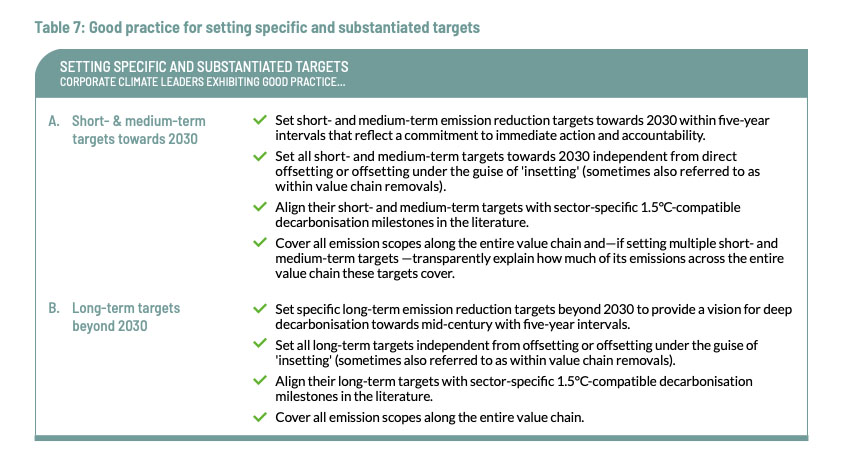
Based on this, we chose to interpret an already achieved target based predominantly on offsets to be a low integrity one. If we had to fit this into our blunt Yes / No form of question / answer format, it was closer to a No, so we didn’t count it.
What did we find?
Question 1: Has this company set interim targets to achieve its Net Zero goals?
1 out of the 19 the companies in 2022 had interim Net zero targets for 2030
The only company we could find with an explicit interim target in the public domain, for the reporting year of 2022, was Paypal Holdings – the company behind PayPal.com. As you can see the one datapoint we found for yourself – they had a target for 2025, from a 2019 base year.
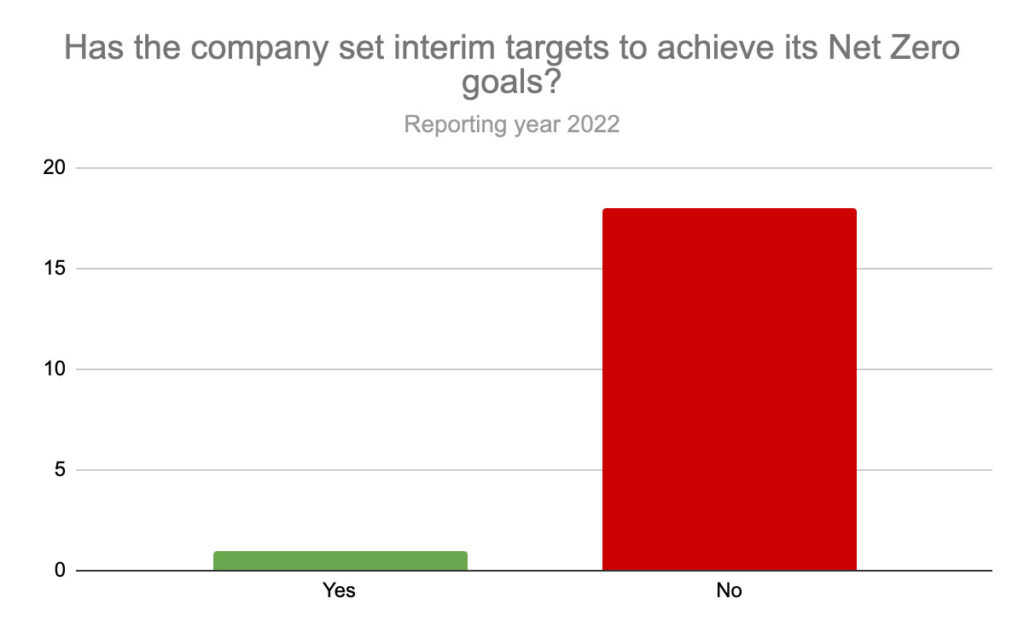
We were unable to find any public figures from the other 18 companies.
We should be really clear that this doesn’t mean we are saying they do not have targets. We are saying these are not in the public domain, which makes it much harder to have a data informed discussion about them.
Perhaps the data is better if we go back one year?
1 out of the 19 the companies in 2021 had interim Net zero targets for 2030
Once again, the only company we could find with evidence in the public domain was Paypal Holdings.
We have one unknown, for the firm that now owns the Yahoo website – a private equity firm called Apollo Global Management that now holds the controlling stake in Yahoo. We couldn’t find information for 2021 that allowed us to tell, hence the ‘unknown’.
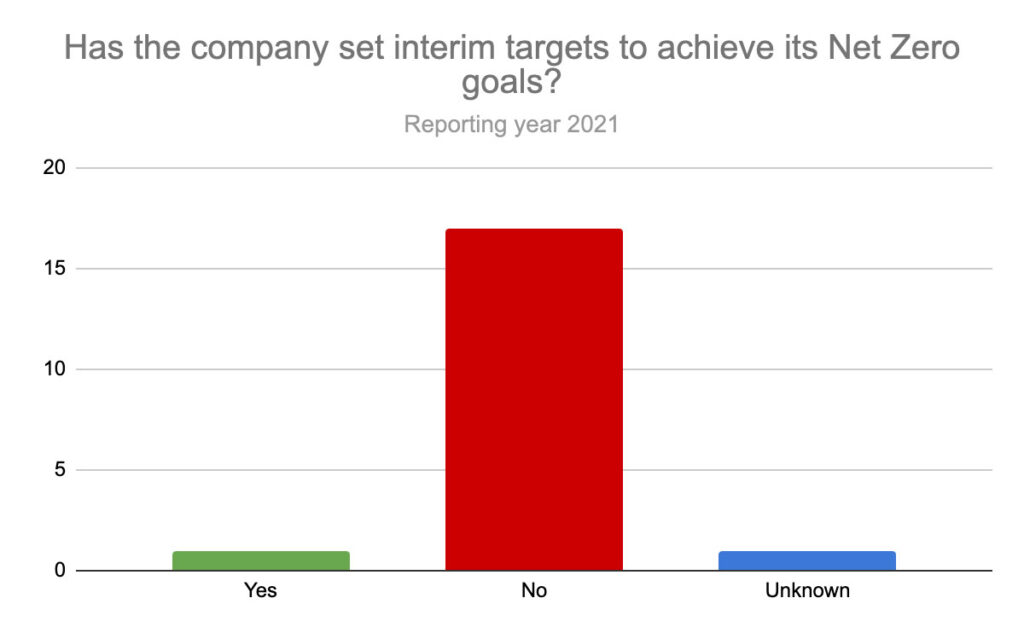
This sounds pretty poor, and it can give the impression that basically all 19 tech firms making up the majority of the internet by usage fail “the bp test”, we had defined earlier:
If a company wants to be seen as a leader on climate in the tech sector, then it’s fair to ask them to at least meet the benchmark of being as transparent about their plans as a multinational oil company.
So, we at least have an answer for the question about whether firms have interim targets at all.
Question two: Has this company established a Net Zero interim target for 2025?
1 out of the 19 the companies in 2022 had interim Net zero targets for 2025
When we look at 2025 as the horizon for interim targets – once again we saw Paypal Holdings as the only firm. As before the same caveats apply. This refers to targets in the public domain. So these firms might have targets they have not disclosed to the public.
The chart would look almost exactly as the first chart, so to save space, we are not including this in the blog post. But you can view the Wikirate platform, with an auto generated chart.
1 out of the 19 the companies in 2021 had interim Net zero targets for 2025
Like 2022, we only have one firm again with a 2025 target in any reportings for the year of 2021 – PayPal Holdings. As before, you can view the Wikirate platform to see every answer, and source and an auto-generated chart.
Insights from this research
From this we’ve learned a few key things that are worth sharing.
Finding the data needed to answer these questions, even when it was published, was not easy
The first was that finding data for the firms involved was extremely time consuming, and relied on a lot of specialised knowledge. This was the case even when the work was spread across a number of people working together, and when many of whom have deep expertise in this domain.
In some cases, the companies that own a domain like youtube.com or yahoo.com had very different names from the domain name we might be used to seeing. On more than one occasion you needed to know quite a bit about a website’s history, and when the company behind it was bought or sold, to know which firm’s reports to look up.
However, even when you could easily work out the correct company from the domain name, it could still be a slog. Finding an appropriate ESG / sustainability microsite or the correct part of a company’s website required significant amounts of manual work. While PDFs can be indexed by search engines, they often rank poorly in search results.
This means that a report, even when published with all the correct information, might not be discoverable.
This was one of many reasons we chose to work with Wikirate. Their approach to requiring a source document for every answer is extremely helpful. As soon as one person had found a report to cite, it would be useful for other researchers asking other questions. It also really helped when coming back to our own research weeks or even months later.
Discoverability remains a big unsolved problem, and just having the domain name for the website is no guarantee that you’ll be able to find any meaningful information about the climate ambition of the firm responsible for running the site.
Crowdsourcing involves making multiple judgements in lieu of meaningful standards
The other insight for us was the sheer inconsistency of data from one report to another. We thought Net Zero’s ubiquity would at least allow some kind of comparison.
This was not the case. There was at least some consistency when firms would disclose their carbon emissions using the GHG Protocol. This has emerged as a de facto standard for carbon reporting. But many firms seemed to have their own competing definitions of what Net Zero meant.
Even for firms that followed the GHG protocol, there is enough freedom for two firms doing almost the same activity to report differently – ending up with wildly different reported emissions figures from how they report emissions in their supply chain. For example, a couple of years back, Mozilla, who make up most of their funding from advertising via search deals, put use of their software products as responsible for 98% of their scope 3 emissions. By comparison Google (i.e. Alphabet), and Facebook (Meta), who also make the majority of their revenue from advertising experienced in the end user software, do not really include this in their scope 3 reporting. This inconsistency makes like-for-like comparisons, or even forward-looking statements very difficult to interpret.
Tech companies aren’t as transparent as they should be
In the early stages of this project back in 2022, we started looking into Company Net Zero goals on the Wikirate platform, without really focussing on any given sector. At the time, one of the key criteria was whether we had already been able to find a sustainability report for a company.
Early on, we thought that the tech firms we rely on every day would be some of the most ambitious climate-wise – not least because that’s the impression being generated when reading stories about them in the media.
This research has shown us that if this is indeed the case, we do not have anywhere near the transparency we need to tell if this is true or not. We need to this kind of transparency to have a meaningful public discourse about the role these firms play in meeting the climate goals that the science shows us are necessary.
However, transparency is not all we need. This research has shown how important having standards are for meaningful disclosure once there is an agreement to report transparently.
It also shows us how important discovery might be for making meaningful use of the data that is put into the public domain – if you can’t find the data, then you can’t use it!
Where next?
Since carrying out this research, we have been looking for sources of funding to allow us to spend more time addressing the problems we faced. Specifically around the inconsistency of sustainability information, and discoverability.
We’ve also been watching the regulatory landscape evolve since 2022. New laws have been passed that compel much more standardised, structured disclosure of the climate and sustainability information we were manually trawling for across the internet previously. We think these recent changes create some exciting new approaches to solve the problems we have highlighted in this post.
We recently won a grant from NGI Search to explore this field, and prototype out some potential solutions using carbon.txt. Listen to a 6 minutes audio podcast about our succesful project application, and see the corresponding slide deck used to illustrate the key ideas.
We’ll share more about carbon.txt and how you can get involved in the coming months.
